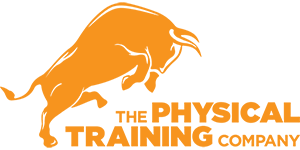Strength Training for Over 40s

Strength training is essential for maintaining overall health and well-being once we hit the 40 year old mark. As we age, our bodies naturally lose muscle mass and bone density, making us more susceptible to injuries and chronic conditions.
Engaging in regular strength training can counteract these effects, promoting muscle growth and bone health.
This form of exercise not only improves physical performance but also enhances quality of life by boosting energy levels, reducing the risk of chronic diseases, and aiding in weight management.
By incorporating strength training into your routine, you can enjoy a healthier and more active lifestyle as you age.
FURTHER READING AND RESEARCH
Benefits of Strength Training When You Are Over 40
Strength training provides several specific advantages that contribute to long-term health. One of the best ways to succeed is to hire a personal trainer for strength training.
One significant benefit is the maintenance of muscle mass and strength, which is crucial for daily activities and overall physical performance.
As we age, our muscle fibers naturally diminish, but targeted strengthening exercises can mitigate this decline.
Exercises like squats and lunges focus on the thigh muscles and calf muscles, keeping them strong and functional.
Joint health, particularly of the knee joint, also greatly benefits from strength training. Knee exercises, such as leg extensions and hamstring curls, can alleviate knee pain and support the knee joint’s structure.
These exercises involve the feet flat on the ground, knees slightly bent, and the body in a straight line, which helps in preventing injuries and ensuring smooth movement.
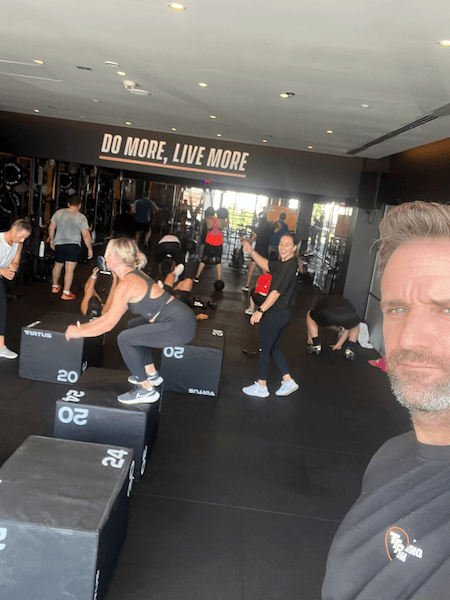
A physical therapist can tailor these exercises to individual needs, focusing on the left leg and right leg to maintain symmetry and balance. Moreover, strength training improves balance and coordination, essential for preventing falls and maintaining mobility.
Exercises that emphasize the abdominal muscles, such as planks and leg raises, enhance core stability. Maintaining proper form, such as keeping feet shoulder width apart and hips forward, is crucial.
Improved balance from strength training reduces the risk of falls and enhances overall physical function, contributing to a more active and independent lifestyle as we age.
Moreover, strength training improves balance and coordination, essential for preventing falls and maintaining mobility.
Exercises that emphasize the abdominal muscles, such as planks and leg raises, enhance core stability.
Maintaining proper form, such as keeping feet shoulder width apart and hips forward, is crucial.
Improved balance from strength training reduces the risk of falls and enhances overall physical function, contributing to a more active and independent lifestyle as we age.
Getting Started: Key Considerations
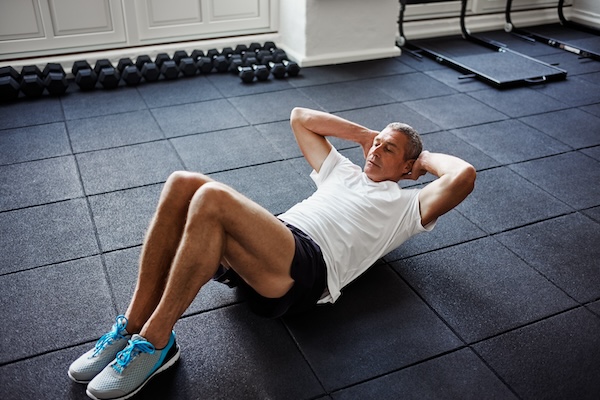
Before beginning a strength training regimen, it’s crucial to consult a healthcare provider or physical therapist. They can provide personalised advice, especially if you have knee pain or other joint issues.
Starting slowly is essential to prevent muscle soreness and injury. Begin with simple strengthening exercises targeting the thigh muscles and calf muscles, and gradually increase intensity.
Focus on maintaining proper form: keep your legs straight and feet hip width apart when performing exercises like squats or lunges. When doing knee exercises, ensure your starting position is correct, with knees slightly bent and feet flat on an exercise mat.
Using an ankle weight can add resistance, but start light and slowly increase as your strength improves. Always switch legs to maintain balance, and pay attention to your left leg and right leg equally to avoid overloading one side. This careful approach helps build strong muscles and prevent injury.
Warm-Up and Injury Prevention
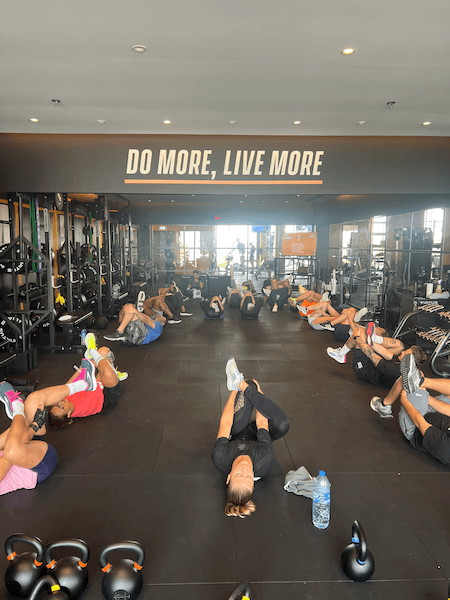
A proper warm-up is essential to prevent injury during strength training. It prepares your muscles and joints, increasing blood flow and flexibility, which helps reduce the risk of muscle soreness and joint strain. Warm-up exercises targeting the thigh muscles and calf muscles are particularly beneficial.
Start with dynamic stretches such as leg swings and high knees. Stand with your feet shoulder width apart and slowly swing one leg forward and back, keeping your movements controlled. This activates the hamstring muscles and helps loosen up your hips. Another effective warm-up is calf raises: stand with your feet hip width apart and slowly lift your heels off the ground, then lower them back down. This exercise targets the calf muscles and improves lower leg flexibility.
Incorporating these warm-up exercises into your routine ensures your muscles are ready for more intense activity, reducing the risk of injury and enhancing overall performance.
Strength Training Exercises
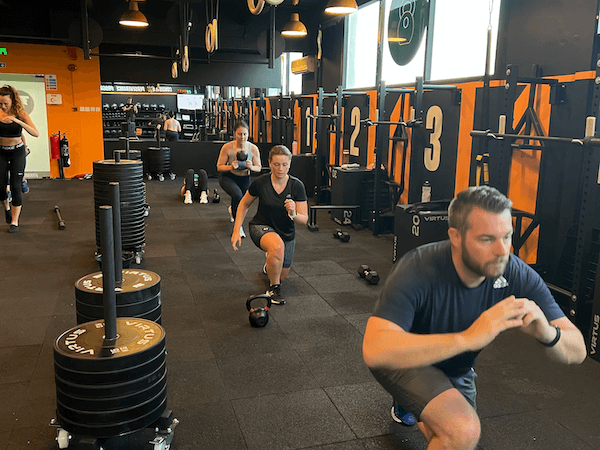
Introducing a variety of strengthening exercises suitable for individuals over 40 is crucial for a balanced and effective fitness routine. These exercises should target different muscle groups to ensure comprehensive strength development.
Key exercises include squats, lunges, push-ups, and rows. Squats and lunges are excellent for strengthening the thigh muscles, glutes, and hamstrings, while push-ups and rows focus on the upper body, including the chest, back, and arms.
Squats are Perfect for Thigh Muscles, Use a Chair for Knee Pain
To perform a squat, stand with your feet shoulder width apart, slowly bend your knees, and lower your body as if sitting in a chair, ensuring your knees do not extend beyond your toes. Lunges are performed by stepping forward with one foot, lowering your hips until both knees are bent at about 90 degrees, then returning to the starting position and switching legs. Push-ups involve lowering your body to the ground from a plank position and then pushing back up, while rows can be done with dumbbells or resistance bands to strengthen the back muscles.
Maintaining correct form during these exercises is essential to avoid muscle soreness and prevent injuries. Ensure your movements are controlled, avoid locking your joints, and keep your body aligned. Incorrect form can lead to unnecessary strain on the joints and muscles, particularly in the knee and shoulder areas. By focusing on proper technique, you can maximize the benefits of strength training and promote long-term health and fitness.
Lower Body Strengthening Exercises
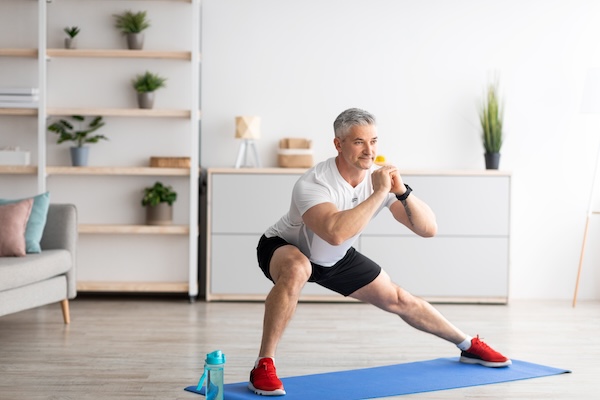
Knee Strengthening Exercises
Knee strengthening exercises are essential for maintaining mobility and relieving knee pain, particularly for those over 40 who may experience achy knees. Leg extensions and hamstring curls are two effective exercises. To perform leg extensions, sit on an exercise machine with your back straight, and slowly extend your right leg until it is parallel to the ground, then lower it back to the starting position. For hamstring curls, lie face down on a leg curl machine, place your feet under the roller pads, and curl your legs up towards your glutes, then slowly lower them back down. These exercises target the knee joint and surrounding muscle groups, helping to strengthen the knees and reduce pain.
Thigh Muscles Focus
Exercises that focus on the thigh muscles, such as squats and lunges, are crucial for overall leg strength. To perform a squat, stand with your feet shoulder width apart, slowly bend your knees, and lower your hips as if sitting in a chair, keeping your back straight. For lunges, step forward with your right foot, bend both knees until your back knee nearly touches the ground, then push back to the starting position and repeat with the other leg. Ensure your knees are bent at a 90-degree angle and your feet remain shoulder width apart to maintain balance and avoid injury. These exercises not only strengthen the thigh muscles but also contribute to stronger knees and improved stability.
Upper Body Strengthening Exercises
Arm Exercises
For effective arm strengthening exercises, consider incorporating bicep curls, tricep dips, and shoulder presses into your routine. Bicep curls can be performed using dumbbells or a resistance band. Stand with your feet hip-width apart, hold the weights in your hands with palms facing forward, and slowly bring the weights up to shoulder level, then lower them back down. Tricep dips are excellent for targeting the back of the arms; use a sturdy chair or bench, place your hands behind you, and slowly lower and lift your body. Shoulder presses, using dumbbells or resistance bands, involve lifting the weights from shoulder level to above your head. Gradually increasing the weights over time can help avoid injury and ensure continuous improvement in strength.
Core and Abdominal Muscles
Strengthening the core and abdominal muscles is crucial for overall strength training, especially as you age. Exercises like planks and sit-ups are highly effective. To perform a plank, get into a push-up position with your body in a straight line from head to heels and hold the position for as long as possible. Sit-ups target the abdominal muscles; lie on your back with knees bent and feet flat on the floor, cross your arms over your chest, and lift your upper body towards your knees, then slowly lower back down. A strong core supports the spine, improves posture, and enhances stability and balance.
Back and Chest
For back and chest strength, exercises like push-ups and rows are ideal. Push-ups engage the chest, shoulders, and triceps, and rows target the upper back and biceps. Perform push-ups with your hands shoulder-width apart and your body in a straight line, lowering your chest to the ground and then pushing back up. Rows can be done with dumbbells or resistance bands; bend over at the hips, keeping your back straight, and pull the weights towards your waist. These exercises contribute significantly to upper body strength and better posture, paying huge dividends in daily functional activities.
Key Takeaways
In conclusion, strength training for individuals over 40 is a vital component of maintaining and enhancing overall health and well-being. By incorporating a variety of exercises that target different muscle groups, including the thighs, calves, arms, and core, you can mitigate age-related muscle and bone loss, improve joint health, and boost balance and coordination. It is essential to start slowly, use proper form, and consult with a healthcare provider or physical therapist to tailor a program that meets your specific needs. Regular strength training not only helps in preventing injuries but also ensures a more active, independent, and fulfilling lifestyle as you age. Embrace the benefits of strength training to enjoy long-term health and vitality.

